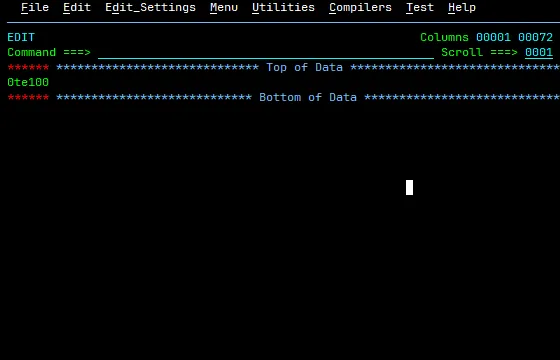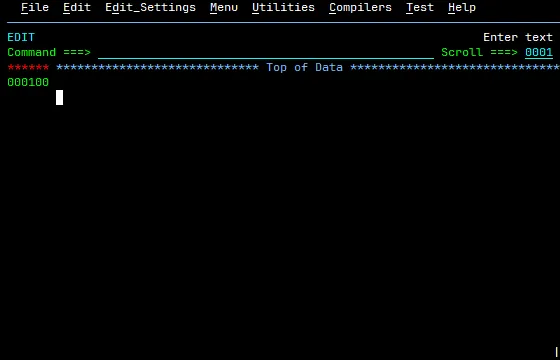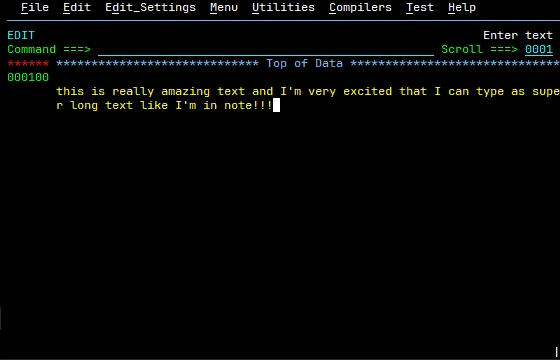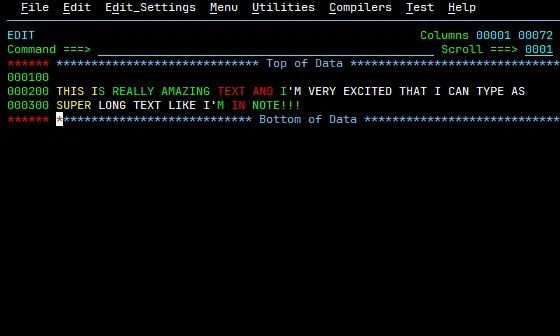z/OS ISPF Editor: Text Entry Line Command
What does the TE command do?
The wise philosopher Uncle Ben once said “With great power comes great reponsibility.” With that in mind, allow me to introduce to you to the TE (Text Entry) line command. This powerful command allows you to unlock power typing mode in the ISPF editor. In power typing mode you can enter multiple lines of text that will automagically word-wrap. This is probably the closest to a standard text editor you can get with the ISPF editor. Just remember that if you want to add a line break, you cannot use the Enter key. Doing so will exit text entry mode. Instead, if you want a line break, you’ll have to use SHIFT + ENTER, or arrow keys to move to the next line.
Things to note about text entry mode
- When you type
TEand press enter, the editor will clear all the lines below the line you enter the command on. Don’t panic, this is normal. - When in text entry mode, look in the bottom right corner of the screen. You should see a pipe (
|) character. This is a visual indicator of where you’ll run out of room. But this doesn’t mean you can’t type more. If you scroll down, additional blank lines will appear for you to type in. - If you want have your text wrap between particular columns, ensure you set your
BOUNDS. If you’re not familiar with theBOUNDScommand, it’s basically a way to set the left and right margins. - While you’re typing you may notice that some longer words appear split between two lines. Once you leave text entry mode, the editor will take over and format them correctly.
How to enter text entry mode
To enter text entry mode:
- Type
TEin the line command area where you want to start enter free-form text, and press Enter. - You’re now in power typing mode! You can type freely, and the text will automagically wrap to the next line when it reaches the right margin.
- When you’re done typing, press ENTER to exit text entry mode.
Visual Examples
Figure 1: Shows the editor before text entry mode, with the TE command typed into the line command field.

Figure 2 Shows text entry mode has been activated and the pipe in the lower right corner.
 ’
’
Figure 3 - Shows a very long string of text (note that “super” is cut off).

Figure 4 - Shows that the long text has been properly formatted after Enter has been pressed.

Summary
In this #kilobit, you learned how to use the TE line command. Until next time, may the code be with you.